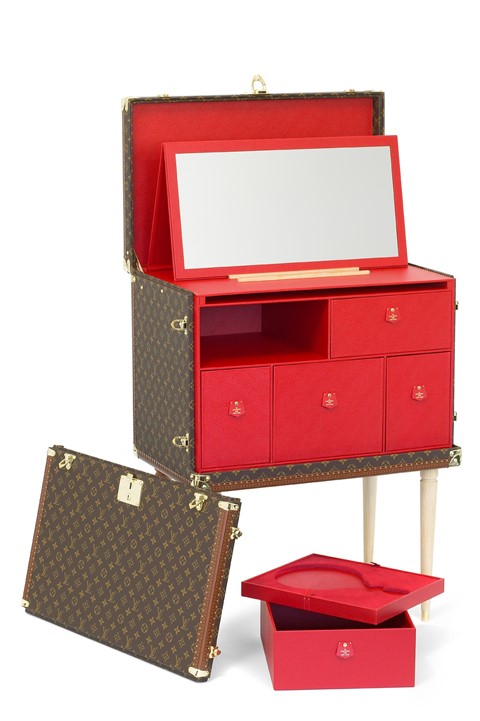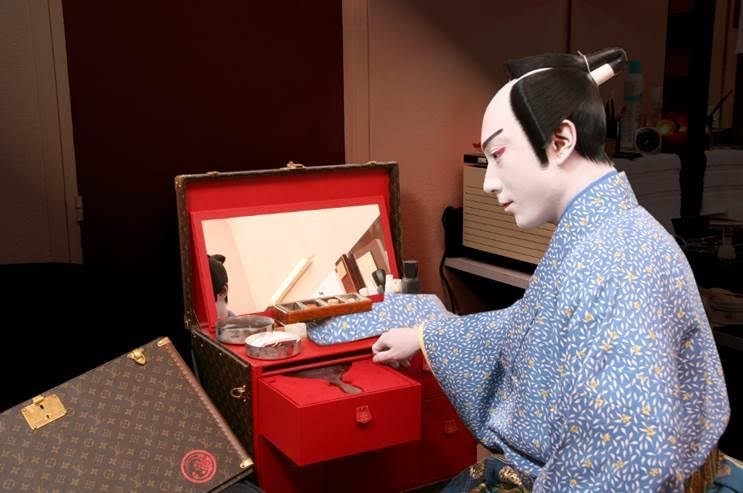In the first expansion of our #anothercuriosity series, we examine Louis Vuitton's custom-designed kabuki case, celebrating the traditional art of Japanese theatre
Kabuki is a historied facet of Japanese culture: the art of theatrical performance which employs elaborate costumes and stark, stylized cosmetics to dramatically communicate historical narratives. While the tradition originated during the 17th century, over recent years Ebizō Ichikawa – the son of Kabuki celebrity Danjūrō Ichikawa XII and grandson to one of histories most celebrated tachiyaku Kabuki actors, Koshiro Matsumoto VII – has revived slightly waning cultural interest, by modernising his craft. “Just because something is part of a nation’s generational cultural heritage,” he told the Financial Times earlier this year, “doesn’t mean the audience will just watch it, or stay awake during the performance if they do go.” So, not only has he shifted his performances’ timeslot to fall later in the day – traditionally kabuki starts at 4.30pm; Ichikawa’s own production company sounds the opening chord of the samisen at 7pm – but he is an avid proponent of social media, with his personal Instagram account accruing a respectable following of 134k digital-era kabuki fans.
One of the most enchanting elements of kabuki is the application of cosmetics known as ‘kumadori’: faces are powdered white (‘oshiroi’) and make-up is then precisely applied to symbolise a character’s persona; heroes are painted with bright red stripes, villains are given purple veins and heavy-set, dark blue brows. The actor himself must apply his own cosmetics; there are no kabuki make-up artists, and the practice usually takes at least two hours. In fact, so important is kumadori to a kabuki performance that, following a show, an actor often presses a sheet of paper to their face to preserve the print of their cosmetics to keep as a souvenir. In honour of this revered craft, in 2004 Patrick-Louis Vuitton created a kabuki make-up case, designed in accordance with an actor’s rituals.

“I spent several evenings in the dressing rooms of the theater in Nagoya,” he explains, “taking note of the actors’ slightest movements during their long makeup sessions and constituting a list, even longer, of the jars, bottles, and tubes that they used. Everything had to be within reach, as if they were working by instinct and by following the sequence of the makeup applications. I had to think of the stock of supplies, as well.” The result is a monogrammed trunk whose red leather interior is as dramatic as the kumadori itself, and whose adjustable three-sided mirror and plentiful of trays and drawers accommodate even the most precisely-arranged toolkit; the marriage of the traditional craftsmanship of Louis Vuitton with the historied art of kabuki.
Louis Vuitton’s travelling exhibition of trunks, Volez, Voguez, Voyagez is at 5-1-3 Kojimachi, Chiyoda-ku, Tokyo, 102-0083 from 23 April to 19 June, 2016.
